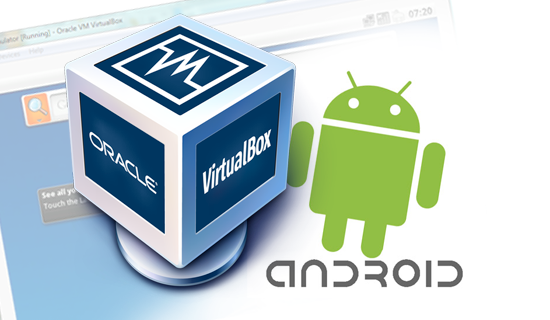Want to run Android on your PC? The Android-x86 Project has ported Android to the x86 platform from ARM. Android-x86 can be installed on netbooks with supported hardware, but you can also install Android in VirtualBox.
Android can be run as just another virtual machine, like you would run a Windows or Linux virtual machine. This allows you to play with the Android interface and install apps in a full Android environment on your PC.Let Me Tell You that this is the complete OS For PC not just an Emulator so













Android can be run as just another virtual machine, like you would run a Windows or Linux virtual machine. This allows you to play with the Android interface and install apps in a full Android environment on your PC.Let Me Tell You that this is the complete OS For PC not just an Emulator so
What You’ll Need
Before you can get started, you’ll need both VirtualBox and an Android-x86 ISO to install inside VirtualBox.
- Install VirtualBox: Download and install VirtualBox if you don’t already have it installed.
- Download an Android-x86 ISO: You can find the latest Android-x86 ISO files at Google Code. Download the latest one — currently Android 4.2.
Creating an Android Virtual Machine
You can now open VirtualBox and create a new virtual machine by clicking the New button. Go through the wizard and configure your virtual machine with the following settings:
- Operating System: Linux – Linux 2.6
- Memory Size: 512 MB
- Hard Drive Size: 3 GB or More

Next, power on your new virtual machine and point VirtualBox at the Android-x86 ISO file you downloaded. The installer will boot up inside your virtual machine.
Select the Installation option and press Enter to continue.

We’ll need to create a partition for the Android system. Select the Create/Modify partitionsoption and press Enter.

Select the New option with your arrow keys and press Enter to create a new partition in the free space.

Choose the Primary option and press Enter, then press Enter again to have the partition take up the entire size of the virtual disk you created.

Highlight the Bootable option and press Enter to make the partition bootable, then select the Write option and press Enter to write your changes to the virtual disk. You’ll have to type yes and press Enter to confirm writing the changes.

Activate the Quit option and you’ll go back to the Choose Partition screen.
This time, you’ll see the partition you created at the top of the screen. Select the partition and press Enter to install Android to it.

Select the ext3 file system, and then select Yes to format the partition.

Choose Yes to install the GRUB bootloader, and then select Yes to install the /system directory as read-write.

Once you’re done, you can remove the ISO file and reboot your virtual machine.

Android should boot up like any other operating system would in your virtual machine. As with an Android smartphone or tablet, you’ll have to go through the setup process and optionally provide Google account details. Skip the Wi-Fi setup screen — Android will use your virtual machine’s standard Internet connection.

If your mouse cursor doesn’t work, click the Machine menu and select the Disable Mouse Integration option. Click inside the virtual machine and you’ll see the mouse cursor. Press the host key displayed at the bottom-right corner of the virtual machine window (default key: Right Ctrl) to release the mouse cursor from the virtual machine.

You’ll boot into a live Android environment, complete with Google apps like Gmail, Maps, and the Play Store for installing other apps.
Android is primarily designed for touch input, but it can also be used with a mouse and keyboard — this means that your computer’s mouse and keyboard can function as serviceable input devices. Just don’t try doing anything you need multi-touch for.

This isn’t the fastest way to run Android apps on your PC — BlueStacks is faster if all you want to do is play Temple Run 2 or another Android game on your Windows PC. However, Android-x86 provides access to a complete Android system in a virtual machine. It’s a great way to get more familiar with a standard Android system or just experiment with it like you would experiment with a virtual machine running any other operating systems.
Go full-screen with an Android virtual machine and you’ll get an idea of what it would be like to use Android on a laptop. If the rumors we’re hearing are correct, we’ll be seeing Android laptops coming out this year — ASUS Transformer devices already function just like Android laptops when in docked mode.












0 comments:
Post a Comment